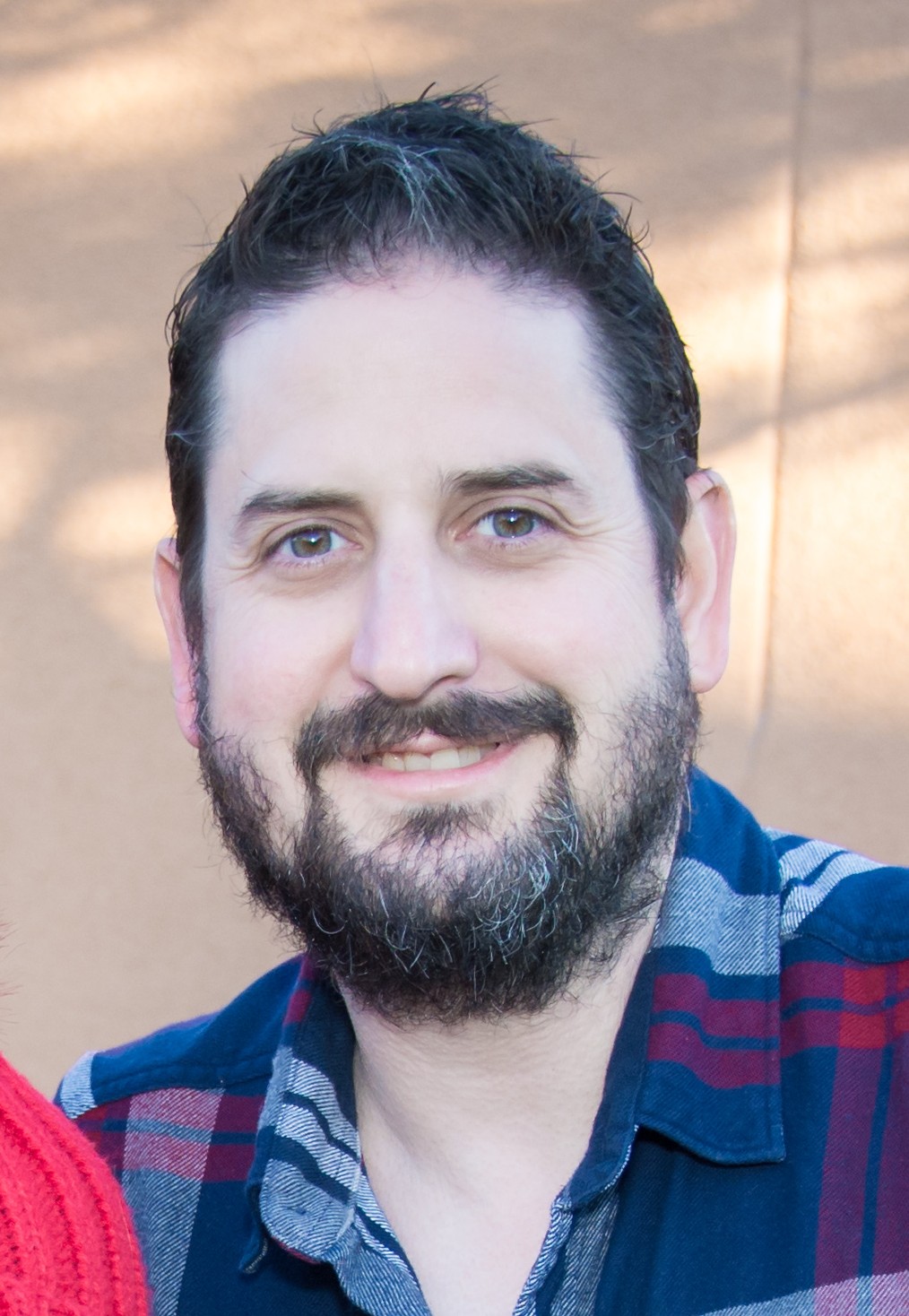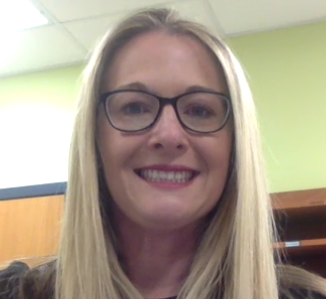It can happen to the best students.
An honors student diligently doing research for an assignment stumbles onto a website with information that appears credible.
Lured in by the presentation and the spin of headlines and text, a seemingly sound resource is simply an example of “fake news”. And yet, because of a lack of editorial judgment, the student presses on. Only when that assignment is delivered to a watchdog – in this case, a teacher – does it become crystal clear that the project’s direction needs to be scrapped.
Chris Salvagio and Alexis Rhyner, teachers at Cienega High School in Vail, Ariz., say this misinformation is ensnaring even top students who operate in the digital-first age, where creative fiction replaces fact and where that content can be created and disseminated in minutes.
“They’re so confident that they end up in a little bit of that trap that they don’t recognize until it’s a little too late,” Rhyner says. “I’m working pretty exclusively on teaching media literacy in the very beginning of my class and also focusing on how they shouldn’t let the curiosity get the best of them. Curiosity is so important, but also it can be pretty dangerous if you end up on a rabbit hole that you don’t check as often as you should.”
Rhyner and Salvagio joined Turnitin’s Patti West-Smith and esteemed NewsGuard co-founders Gordon Crovitz and Steven Brill for a spirited discussion on “Fighting Fake News: Teachers, Technology and Truth” in a live webinar on Thursday.
Two of the biggest questions up for debate during the session where these: “Is there a crisis of misinformation in education, and how can students learn to tell good reporting from bad?”
The latter one might be more easily answered than the first – as many educators will attest – to the collaborative efforts of both Turnitin, a company that presses for academic integrity, and NewsGuard, which monitors the trustworthiness and transparency of more than 4,000 news sites. There’s another first line of defense that is just as important in media literacy – teachers – and their role in ensuring students are researching good information.
“We have to talk to students very clearly about what is acceptable and what isn’t acceptable, with very concrete examples that are relevant to their world,” West-Smith says. “We have make them very explicit. Sometimes we get into a habit of defaulting back to sort of where our generation lives. And when we do that, it’s hard for students to make that immediate connection to what is happening for them.”
The misinformation that’s out there


All of the panelists say they’ve experienced seeing misinformation on “news” sites, maybe none more than Crovitz and Brill. Both have extensive backgrounds in media and journalism – Crovitz was the former publisher and columnist at The Wall Street Journal as well as a Rhodes Scholar, while Brill was the founder of The American Lawyer, CourtTV and the Yale Journalism Initiative.
They say fake news is prevalent across the web, and their organization aims to determine the credibility of information that sites, search engines and platforms present – with red and green alerts for each, as well as “a nutrition label” that has “nine specific criteria” for sorting out overall trust scores.
According to Brill, a rating label typically goes through six sets of eyes – not algorithms. Decades ago, the task was much easier. Now, the prevalence of bad information combined with the stealthy nature of certain sites can make it less apparent.
“People around the world of all ages, not just students, feel anxious about the quality of news and information and whether they’re relying on good sources of information,” Crovitz says. “People knew the difference between the National Enquirer and the Philadelphia Inquirer. Now, on the internet, everything looks so alike, it’s difficult for people of all ages and all levels of sophistication.”
Brill cited an example in education of teachers including dot.org sites instead of dot.com sites on a syllabus. While some of those sites might appear reliable, such as those that pose as “charity organizations”, they have other missions.
“It’s a dot.org, and they are funded by [political action committees],” Brill says. “And just coincidentally, they write wonderful puff pieces about whoever the local state representative is, or congressman that they’re backing. And they write negative pieces about that opponent. And that is really dangerous stuff it is a real threat.”
The value of using NewsGuard goes beyond the red and green alerts. It contains a reliability score (0-100) that provides a learning opportunity for both instructors and students.
“There is tremendous educational value in seeing the red sites and reading the nutrition label,” Brill says. “We don’t think students should be blocked from [seeing the label]. We think they should be taught to use tools in order to educate themselves.”
Rhyner concurs with that extra step.
“NewsGuard allows [students] to learn the field so that maybe at some point, they don’t need to go check and clearly look at that nutrition label,” she says. “They’ve now learned those skills on their own.”
Applying media literacy in education
The examples Rhyner and Salvagio cited in misguided approaches by students came in high school, long after those students had formulated their own strategies for research. Instead of sourcing several sites, they might look at gleaning information from ones comfortable to them.

West-Smith, senior manager of teaching and learning innovations at Turnitin, says the discussions about media literacy needs to start much sooner.
“It really becomes incumbent upon us as educators to start very early in their education,” she says. “If we start to talk to students about academic integrity and source credibility in middle and high school, we’ve missed the boat. It’s too late because they’re starting to create content and pull in sources and quote things and paraphrase things very early in their education.
“In some cases, it should happen in the third, fourth and fifth grade, where they’re beginning to incorporate textual evidence. That’s the point at which we should be talking to them about attribution and about credibility of sources.”
West-Smith emphasized the importance of educators to recognize who their students are, how they are approaching their work and how their techniques were and are developing.
“Our students really live in a different environment when it comes to content creation,” West-Smith says. “They have tools at their hands that can allow them to create videos and podcasts and memes and any kind of publication you can think of, and then with a click of a button, they can publish that to the world. So, they really view content creation quite differently than previous generations did. I think the first step is to begin to establish some norms around that.”
That will be essential as students continue to operate in remote learning environments, says Rhyner, who is concerned about students grasping proper research and sourcing strategies.
“We were already a 1 to 1 school, but I think the pandemic and the remote learning are making students become even more dependent on those devices,” she says. “We would use them every once in a while in class. And now, your entire class will be online and I haven’t yet seen a new or deeper focus on media literacy.”
Two other areas of concern are where media literacy resides in schools – as part of 21st century skills, standalone courses, English Language Arts or other areas – and how to impart knowledge to a very mobile camp of students.
“Students have far mobility than previous generations,” Rhyner says. “Students are moving, and their understandings vary wildly. So, it is a concerning method, the way we’ve approached it from a curricular standpoint. It’s particularly concerning in today’s world, where we’re seeing a rapid spike in 1 to 1 initiatives where every student is assigned a device.”
Positive outcomes


Students who can delineate the good from the bad and spend time researching and questioning what they see will succeed, says Salvagio. But knowledge is still king.
“Media literacy is much more than media literacy,” Salvagio says. “It is also political literacy. Students have to be literate in history. They have to be literate in psychology. They have to be literate in all kinds of disciplines. It’s really difficult to teach nuance because even if they’re literate in all these [areas], they still want to kind of grab it for an answer.”
While Turnitin has provided a big assist, particularly in the area of plagiarism, NewsGuard has given educators an extra layer of comfort, knowing that students can explore which sites are credible and discover additional methods in doing research.
“I felt like once we implemented NewsGuard, we actually didn’t have to say social media doesn’t count anymore,” Rhyner says. “We required them to dissect that nutrition label as part of their research. They had to go chase it back. Putting them on that scavenger hunt of finding that information forced them to realize, Facebook is not a good place to research.”
That hunt for information and work with NewsGuard has made a world of difference in the quality of the work Rhyner says she sees.
“Our paper quality went up a lot once we starting using NewsGuard; I think we got papers that had more substance to them,” she says. “Students seemed to care a little bit more about their topic. Giving them control is a significant perk not having to rely on me to tell them, ‘no, that’s not credible.’ They have the power to do that on their own.”
Chris Burt is a reporter and editor for District Administration

